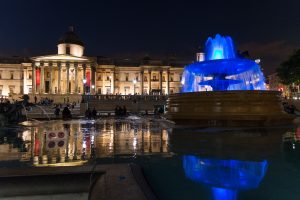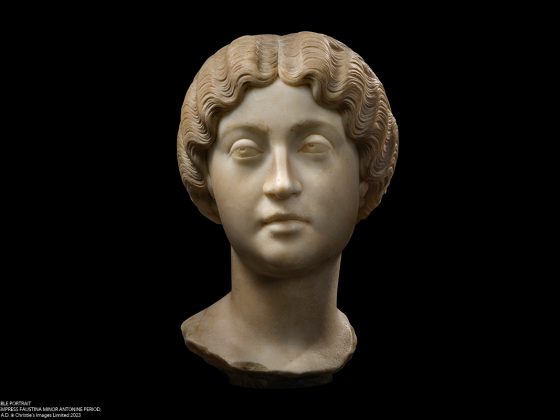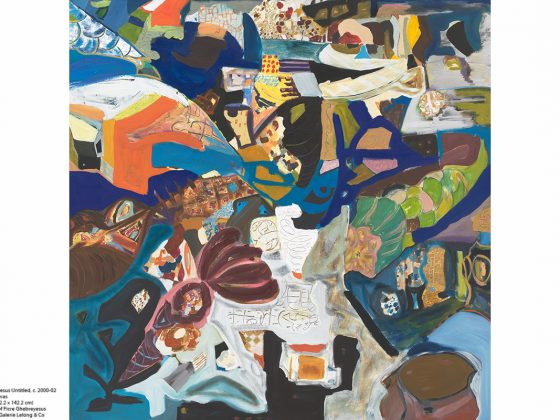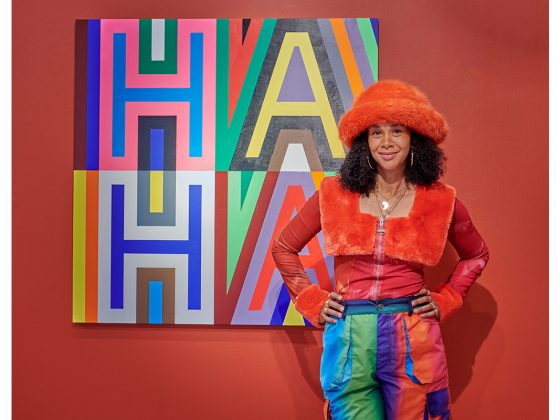Themed Viewing Rooms, Live Talks, 52 Participants 1,000 Works of Art Spanning 5,000 Years – London Art Week DIGITAL – Summer 2020
London Art Week Digital – Friday 3 July to Friday 10 July 2020. The event introduces a series of unique viewing rooms created by London Art Week to present side by side the works offered for sale from 52 leading international galleries and auction houses. An invitation-only Preview takes place on Thursday 2 July

VIEWING ROOMS CURATED BY ERA
London Art Week has taken inspiration from museums, where movements or periods of art are often grouped together to consider how different artists represent the spirit of their Era. The LAW viewing rooms will likewise be grouped by artistic periods. They will contain a mix of media – sculpture, paintings, drawings, works of art and objects – drawn from across the participants’ individual exhibitions. Unlike a fair where each dealer’s booth must be viewed separately, this very different approach was devised by London Art Week in order to enliven the experience of perusing art online, and enhance the visitor’s pleasure of new encounters with dealers and artists. Two supplementary rooms focus on a selection of highlights from every participant, and the theme of woman as artist and muse.
Dealers also have their own exhibition page on the London Art Week website with up to 25 works for sale, in many cases different to those displayed in the viewing rooms. Supporting materials such as scholarly research and explanatory videos can be viewed alongside images of the works for sale, and a zoom facility enables closer inspection. Cross-references on the webpages will link related works, leading collectors on a tourof discovery.
Some galleries will be hanging their LAW exhibitions in reality, and sharing films from their physical spaces online; indeed, the majority of galleries, in London and internationally, can now be visited in person by appointment. The event catalogue will also be available online.

THE VIEWEING ROOM THEMES
- Ancient and Medieval Art: Art before 1450
- From the Renaissance ideal to Caravaggesque realism: Humanism to the Birth of the Baroque (1450-1630)
- Baroque, Rococo, the Golden Age &the Enlightenment: The Rise of a New Power (1600-1780)
- The Classical Ideal and Romanticism: Reason to Emotion (1780-1860)
- Fin de Siècle, Historicism, Symbolism and Modernity: New Influences (1860-1914)
- Between the Wars: A Longing for Order, Art from 1914 to 1945
- Post Warand Intothe 21stCentury: The Fruits of Peace
- Artists and Muses: The Changing Faces of Women in the Arts
- London Art Week Selected Highlights
EYE-CATCHING HIGHLIGHTS
Highlights to be found in the Viewing Rooms and on the participants LAW web pages:
New to the market and offered by William Thuillier(London), a returning participant with LAW, is a view by Benjamin Constant(1845-1902) of the Court of the Myrtles in the Alhambra, Granada. The painting was purchased almost directly from the artist’s studio via the agent Valadon. Constant represents the second wave of Orientalism initiated by Delacroix and Gericault, and his generation included stellar names such as Jean-Leon Gerome and Ludwig Deutsch. There was a major exhibition of Constant’s work at the Musee des Augustins, Toulouse in 2014-2015 which very much put him on the map. It is rare to find such an important painting still languishing in a private collection
Maurizio Nobile (Parisand Bologna) will unveil many important discoveries at London Art Week among which is a newly-attributed collaborative work by Gregorio Pagani (1558-1605) and Cristofano Allori (1577-1621). Research by the gallery confirms this portrait is of Agnolo di Lorenzo dei Favilla, a young notary and poet who authored a Rime for the wedding of the Grand Duke Cosimo de’Medici and Maria Maddalena of Austria, printed in 1608 on the occasion of the celebration. The young man’s identity has been verified in a baptismal register in the archives of the Opera del Duomo in Florence. Of the painting itself it is believed Gregorio Pagani began the work, but it was completed by Cristofano Allori after Pagani’s death. At the time of this painting in 1607, Cristofano Allori had abandoned the “dry” style of his father Alessandro in favour of a more psychological approach –seen in this immortalised youth.

Mireille Mosler, joining LAW from New York, presents Fin de siècle: Melancholy, Hope & Nature. The highlight is aspecial 1896 drawing by Gustave Moreau (1826-1898) which has a fascinating provenance in the collections of two well-known women patrons. Hélène Glorifiée, commissioned by the countess Greffullhe, a leading patron in Paris and muse to Marcel Proust’s À la recherche du temps perdu, was prominently placed and admired in her living room. Hélène Glorifiée was so successful that it prompted the artist to produce an unfinished larger than life-size painting, now in the Musée Gustave Moreauin Paris. Helen, the female protagonist from Goethe’s Faust is surrounded by her eternal admirers. Referencing Botticelli’s Birth of Venus, Moreau’s bejewelled protagonist is perhaps one of the best examples of his unique Symbolism and the hazy mysticism so prevalent in fin de siècle Paris. (*Image above)
Returning to London Art Week is Benjamin Proust Fine Art Ltd (London). The gallery offers an extremely important sculpture made around 1545 for Cosimo I de Medici for the garden of his villa di Castello near Florence, the first of what have become known as ‘the Medici Villas’. The work carved in Carrara marble is by Pierino da Vinci (1529/30-1553), a nephew of Leonardo da Vinci, and depicts Two Children Holding a Fish. The group stands 67.7 cm tall.

New to LAW is Agnews(London) who present The White Door, 1888, the first known painting of an empty interior a subject which would become a hallmark of his artistic oeuvre by Vilhelm Hammershøi (1864-1916). In this early work, the artist has incorporated all the elements so representative of his unique style. The White Doorwas executed during Hammershøi’s two-week stay at Karl Madsen’s home in Lyngby, north of Copenhagen in the autumn of 1888. Madsen was a celebrated Danish art critic and one of Hammershøi’s most ardentand astute supporters. In a 1908 interview, Hammershøi recalled the present painting: “The first interior I painted, if my memory doesn’t fail me, was out at Karl Madsen’s place. I stayed with him in the autumn of ’88 in an old house called Albertine Lyst. In any case, it was the first picture of an empty room I painted. I have always thought there was such beauty about a room like that, even though there are no people in it, perhaps precisely because there are no people in it”.
Sotheby’s offers a Self-portrait, half-length, wearing a ruff and a black hat by Rembrandt Harmensz. van Rijn (1606-1669), dating from 1632 and painted in oil on oak panel. Almost all of Rembrandt’s self-portraits are by now in major museum collections, and only three remain in private hands. This, the earliest in date of the three, comes from a private collection and carries a pre-sale estimate of £12,000,000 to £16,000,000.

Discovered recently in a West Country garden, a Roman marble male torso of the 2nd century AD from the celebrated Cook collection features in the exhibition presented by Oliver Forge & Brendan Lynch Ltd (London), entitled ‘The Past is a Foreign Country’, Ancient Art from the Mediterranean. During the 19th century Sir Frederick Cook amassed a famous collection of ancient art at Doughty House, Richmond. First published in 1882, the torso was again recorded by the art historian Eugenie Strong in 1908. Last located in 1955 with Crowthers of Syon Lodge, the sculpture was then bought by the present owner’s father.
Other artists whose works are represented in the LAW viewing rooms include Frank Auerbach, Giovanni Boldini, David Bomberg, Pierre Bonnard, John Constable, Edgar Degas, Eugène Delacroix, André Derain, Thomas Gainsborough, Théodore Gericault, Guercino, Paul Klee, L. S. Lowry, Jean François Millet, Henry Moore, Jean-Baptiste Oudry, Pablo Picasso, Auguste Rodin, Hubert Robert, Dante Gabriel Rossetti, John Ruskin, Jan Steen, Giambattista Tiepolo, J.M.W. Turner, Anthony Van Dyck, Edouard Vuillard and Antoine Watteau.

THE STORIES BEHIND THE ART.
Live Talks and Events
Scheduled talks include: with Masterpiece, a webinar debating new ways to buy art online; De-mystifying the Old Master Marketin conjunction with ArtTactic, a discussion in association with The Art Loss Register looking at how research and provenance are important when building a pre-contemporary art collection. Further subjects cover the influence of the antique in art from the Renaissance onwards, and collecting sculpture for the Kunstkammer. Dates and times can be found on the LAW News & Events webpage.
Daily video stories from partner the National Gallery will be aired at 9.30am from 6-10 July via @londonartweek_ in the guise of LAW xNG Breakfasts, 30 minutes of enlightenment on a variety of works in the museum, viewable on Instagram, Facebook and the LAW website. There is a series of Live Instagram Chats involving a London dealer and an international dealer discussing an object each. Adding to the LAW dialogue, exhibitors and museum partners have shared videos that reveal in-depth stories behind works in their collections.

London Art Week – Digital
03 – 10 July 2020












